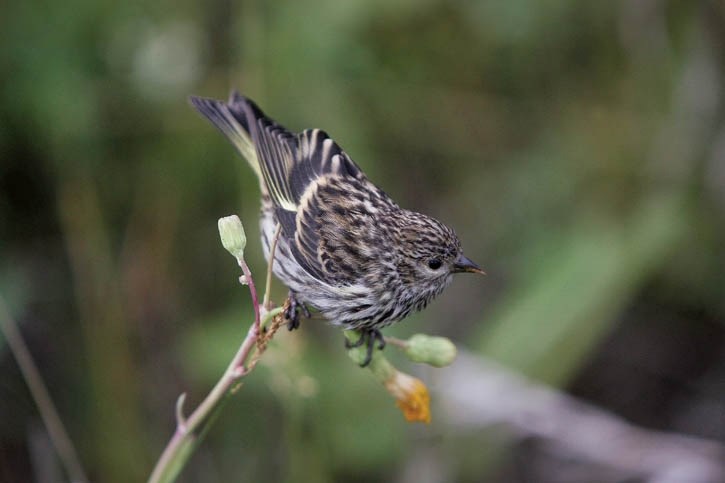Many songbird species in Banff National Park have declined in a relatively short time period, according to a recently released report.
Parks Canada’s wildlife ecologists Jesse Whittington and Anne Forshner analyzed five years of songbird recording data from 135 sites in Banff from 2007-2011, finding 20 of 61 species significantly declined, while only eight species increased.
Officials say scientists are finding that many songbird species, which are vulnerable to a changing climate, habitat loss and habitat fragmentation, are declining throughout North America.
“We found a high percentage of species showed significant decline,” said Whittington. “These results were somewhat surprising given the relatively short monitoring time period of five years.”
In 2007, the mountain national parks, including Banff, developed a bird monitoring program to track changes in bird abundance both within parks and across a large area from Waterton to Jasper.
Researchers recorded 10 minutes of birdsongs at specific sites during the breeding season. Bird specialists then identified individuals and recorded the minimum number of individuals at each site.
As part of the songbird research, 10 years of data collected in the lower Bow Valley and Vermilion Lakes by Banff birders Mike and Diane McIvor was also analyzed and formed part of the paper.
Resident birds on the decline in the Banff study area were the black-capped chickadee, Clark’s nutcracker, gray jay, hairy woodpecker, and pine siskin. Resident songbirds that increased were the downy woodpecker and pine grosbeak.
Whittington said further investigation is required to determine why these populations are changing.
“Changes in abundance of resident species are likely driven by local climatic, habitat, and predator-prey interactions,” he wrote in his paper.
In addition, aerial insectivores have been susceptible to declines across North America. These populations are strongly affected by the amount of insects, which in turn are affected by climate conditions, habitat, and pesticides.
Whittington said insectivores within Banff’s study area that are dropping in numbers included the alder flycatcher, olive-sided flycatcher, and willow flycatcher. Dusky flycatcher numbers increased and the least flycatcher did not change.
“Interestingly, the declining flycatchers are all long-distance migrants, whereas the dusky flycatcher is a short distance migrant,” said Whittington.
The olive-sided flycatcher was the only declining species that was also listed as threatened under the Canadian Federal Species at Risk Act (COSEWIC 2007).
Olive-sided flycatchers migrate more than 8,000 kilometres from northern Canada to the Andes Mountains in South America.
Whittington said factors affecting population declines are unclear, but are thought to be driven by changing habitat quality in their wintering areas.
“In North America, olive-sided flycatchers strongly select burned and logged forests, however, they have much lower nesting success in logged forests, potentially because of higher predation risk,” he said.
“Continued implementation of prescribed burns in Banff National Park should improve conditions for olive-sided flycatchers.”
The report found one of the challenges associated with identifying threats to migratory songbirds is that population changes can be driven by what’s occurring in their southern wintering areas, migratory routes and northern breeding grounds.
In addition, changing climate conditions can interact with timing of when food is available, the best temperatures for population growth and evolutionary history to affect survival and recruitment rates.
“Given that migratory song bird abundance can be driven by so many factors, it is important to monitor all stages of their life cycle across broad geographic ranges to identify mechanisms behind population change,” Whittington wrote.
The results in Banff are similar to those of a study in Revelstoke-Glacier national parks, where 12 of 55 songbird species declined over a six-year period. Only four species increased in abundance.
Whittington said a comprehensive analysis of all mountain park songbird data from Waterton through Jasper would help identify local trends and factors compared to those across a broader area.
“We’re excited to see what we’ll find from a large-scale analysis with all of the mountain park data,” said Whittington.




